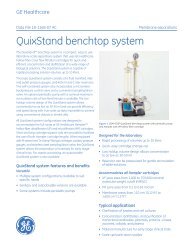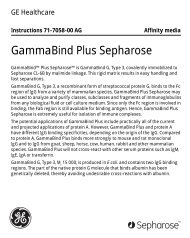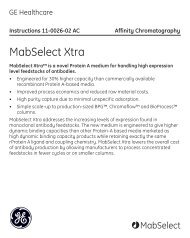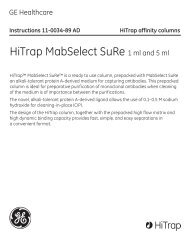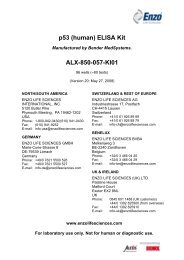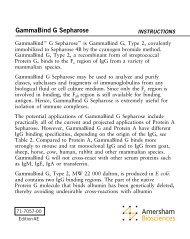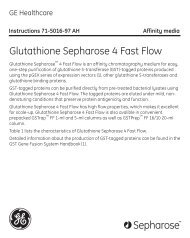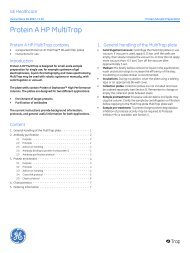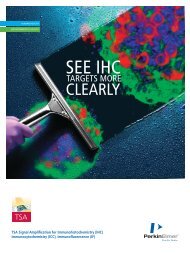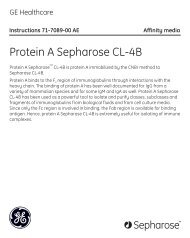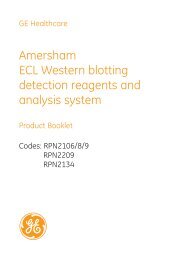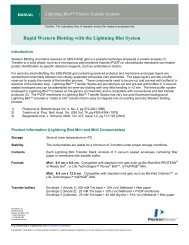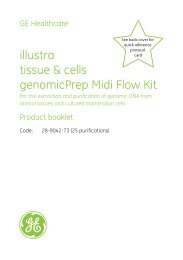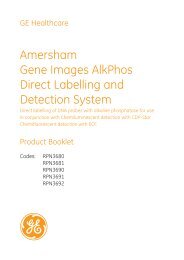HisTrap FF crude Kit
HisTrap FF crude Kit
HisTrap FF crude Kit
- No tags were found...
Create successful ePaper yourself
Turn your PDF publications into a flip-book with our unique Google optimized e-Paper software.
optimal concentration is different for different histidine-tagged proteins, and<br />
is usually slightly higher for Ni Sepharose 6 Fast low than for similar IMAC<br />
media on the market (see Data File, 11-0008-86, Ni Sepharose 6 Fast Flow.<br />
Use a highly pure imidazole, such as the imidazole provided in the kit; such<br />
imidazole gives essentially no absorbance at 280 nm.<br />
The optimal imidazole concentration can be determined by stepwise<br />
elution of the protein with buffers containing increasing concentrations<br />
of imidazole. Stepwise elution, as described in the Optimization Protocol<br />
on page 8 is technically simple and fast, and is suitable for syringe<br />
operation. The results from this stepwise elution will provide information<br />
on which two imidazole concentrations (wash and elution) are the most<br />
suitable for purifications of identical protein samples. The concentration of<br />
imidazole needed in the sample and the wash buffer to prevent binding of<br />
unwanted host cell proteins is generally more critical to determine than the<br />
concentration needed for elution where 500 mM in most cases can be used<br />
for the latter purpose. When high yield is more important than optimum<br />
purity, the Basic Purification Protocol (see page 6) may be used directly,<br />
without prior optimization.<br />
If the histidine-tagged proteins are expressed as inclusion bodies, see page 12.<br />
3. Sample Preparation<br />
For optimal conditions for growth, induction, and cell lysis of your<br />
recombinant histidine-tagged clones, please refer to established protocols.<br />
The following is a general protocol for sample preparation:<br />
1. Harvest cells from the culture by centrifugation (e.g. by centrifugation at<br />
7 000–8 000 × g for 10 minutes or 1 000–1 500 × g for 30 minutes at 4°C).<br />
2. Discard the supernatant. Place the bacterial pellet on ice.<br />
Recommended four-step protocol for cell lysis<br />
The protocol below has been used successfully in our own laboratories, but<br />
other established procedures may also work.<br />
1. Dilution of cell paste: Add 5–10 ml of binding buffer for each gram of<br />
cell paste. To prevent the binding of host cell proteins with exposed<br />
p. 4



